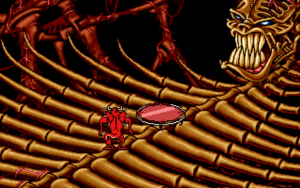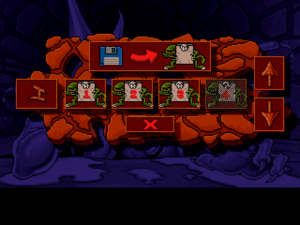Wizardry I: Architectural Surrealism
This time around, I’m really noticing just how weird the entire dungeon is, viewed as anything other than an abstraction. This is a place that just doesn’t make sense. And I’m not even just talking about the physically unrealistic aspects, like wraparound. I mean that it doesn’t make sense that anyone would build it this way, even bearing in mind that it’s a labyrinth created by a wizard.
I think of my recent experiences with Litil Divil. That was a completely artificial labyrinth, with tunnels meandering this way and that for no reason other than to be circuitous, punctuated with rooms containing challenges of various sorts. There’s a senselessness to that, but it’s a top-down senselessness, a senselessness of purpose. The details of the maze and its rooms make perfect sense as an execution of a strange and pointless intention. The dungeon in Wizardry I has rooms too, and hallways leading to rooms, and corridors with rows of doors leading to rooms on either side. What’s in these rooms? In most cases, absolutely nothing. They’re not rooms that serve a purpose. It’s as if the whole thing was built by an alien intelligence that knows that human buildings have rooms in them, but doesn’t understand why.
Alternately, I guess you could decide that the minimalism of the graphics is just hiding implied details. But that just leaves you in the position of trying to imagine details that make sense of rings of tiny rooms or cycles of one-way doors. Level 5 is particularly chaotic. I recall the short-lived Leslie Nielsen comedy series Police Squad! had a recurring gag involving a door that one character goes through while another just goes around the wall of the set it’s in. There’s a door like that near the beginning of level 5, and even worse, it’s a one-way door.
I think that when I played this game for the first time, I wasn’t really taking it seriously as a place. It was as fake as a carnival funhouse, and similarly intended solely for entertainment. You get that in a lot of older games, like how the endgame in Colossal Cave takes you through the warehouse that stocks the caves.
 Comments(0)
Comments(0)
